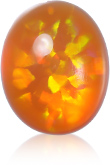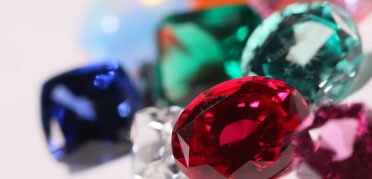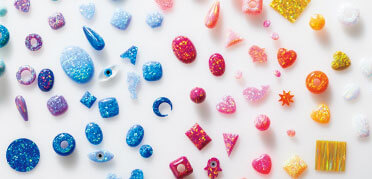Jewelry Glossary
-
F
-
Face Up
Viewing gemstones from the table.
-
Facet Cut
Facet cut has many flat and polished facets and tends to be used for gemstones that have transparency. There are several kinds of facet cuts, such as round, oval, etc.
-
Faceting
Placing and polishing facets. This work consists of "blocking," which is to polish the table and the main surface, and "brilliant finishing," which is to polish the remaining surface.
-
Fancy Cut
Among facet cuts, those not classified as brilliant, step, emerald or mixed cut are collectively identified as "fancy cuts."
-
Figaro Chain
A figaro chain is made by combining short and long ring links.
-
Filling (Enhancement)
Filling is a treatment to fill pores on the surface of a gemstone such as coral with a colored material.
-
Filling (Treatment)
Filling is a treatment to hide a cavity on the surface or inside gemstones by filling it with a transparent material.
-
Fire Opal
The body color of fire opal is orange, red or yellow.
It is sometimes called mexican opal.
[Moh's hardness: 5] [Mineral species: Opal]
Please click
here
to see the details of Kyocera's Crescent Vert fire opal.

Fire Opal

The fiery orange fire opal enchants by glowing as brightly as flames in a fire or the glittering Mexican sun.
With superior transparency and vivid play-of-color, fire opal is named for its burning color and the passion it inspires worldwide.
The beautiful flame of Crescent Vert fire opal was the eleventh gemstone created in Kyocera's lab. Its fine orange color and transparency merit the high praise this engineered gem receives.Available in sizes up to 15 carats.* If you need a larger stone, please contact us.View Comparison Table Item Crescent Vert Fire Opal Natural Fire Opal Chemical Composition SiO2・nH2O SiO2・nH2O X-ray Diffraction Amorphous Amorphous Spectroscopic Analysis Same as natural stone Specific absorption of Fire Opal Crystal system Amorphous Amorphous Mohs Hardness 5.0~6.5 5.0~6.5 Specific Gravity 1.95~2.23 1.90~2.20 Transparency Transparent ~ Translucent Transparent ~ Translucent Refractive Index 1.430~1.455 1.430~1.455 Ultraviolet Ray Examination (Long Wavelength)
Dark Blue Violet - Inert
(Short Wavelength)
Pale Blue - Inert(Long Wavelength)
Strong Blue White - Inert
(Short Wavelength)
Pale Blue - InertSpecial Effect Play of color Play of color -
Fissure
A slight gap inside the gemstone. Certain gemstones such as emeralds and rubies will have oil added (impregnation) in order to cover the fissures which reach the surface.
-
Flat Band
The thickness of a flat band is generally 4-8mm, and the outer circumference is flat-shaped. It can be hand-made or pressed like a domed ring.
-
Flawless
"Flawless" represents the degree of diamond scratch. If a gem is flawless, no imperfection is found inside and outside the gem examined by a 10X magnifying microscope.
-
Fluorescent
Fluorescent is a property of certain substances which give off the light when it absorbs light or X-ray. The presence of fluorescence has a major impact on the gemstones' value.
-
Fluorite
Fluorite is easily melted when used as a flux, so it was named from "fluere," which means flow in Latin. Under UV lights, it shows a fluorescence effect in its blue color. Fluorescence is also found in some diamonds and rubies mined in Myanmar. There is some fluorite colored by radiation at the market.
[Moh's hardness: 4] [Mineral Species: Fluorite] -
Flux-growth Process
The flux-growth process is one of the production methods of lab-grown gemstones (single crystal).
This process was developed in 1958 by an American scientist Dr. Carroll F. Chatham. The flux method is a manufacturing method in which a material is added to flux to lower the melting point, and lab-grown gemstones are grown around seed crystal by gradually reducing the temperature. Kyocera grows emerald by applying this process and our know-how. -
Foil Back
Method to strengthen a gem's color and shine by laying foil inside the bezel whose backside is blocked.
-
Forging
Forging is a method to shape the product by hitting the original metal material with a hammer etc. In this way, it is able to make a strong product because the more it is hit, the crystals in the metal crystalize well.
-
Foxtail Chain
The foxtail chain's name is derived from its softness, which invokes thoughts of a fox's tail.
-
Fracture
A fracture is a crack that occurs inside gemstones, except for the cleavage. It often spreads to the surface and generates surface scratches, so impregnation treatment is done on the gems with fractures.
-




